Our five days in Kyoto have been idylic.
I can't imagine manufacturing better weather than this. The forecast had been all rain and snow for the week, but the reality has been one of windblown sun and cloud skies.
In fact the only thing down here to remind you that it's winter in other parts of the world is the icy wind down out of the mountains, a wind that doesn't seem to have any right being that cold.
 We start each day with sumptuous 7-11 breakfasts because we're men and because we're adventurers. Then it's off to some corner of this sprawling temple complex of a city, to see some sprawling edifice that is inevitably a UNESCO world herritage site.
We start each day with sumptuous 7-11 breakfasts because we're men and because we're adventurers. Then it's off to some corner of this sprawling temple complex of a city, to see some sprawling edifice that is inevitably a UNESCO world herritage site. Seems you can't hurl a stone in this place without striking something that is the biggest/oldest X of it's kind. But don't let my glib jibes belie the value of these structures. Though all of the grand, sweeping temple vistas may be beginning to blur into one, that one image formed is an image of wonder.
Helping me to understand the true heights of that wonder is my father: the structural engineer. I don't think I realize just how megalithic these wooden structures are until I view them through his eyes.
He makes it crystal clear that these thing are descended from tree and clay and stone, back in a time before the steampunk magic we devised to move such things quickly and easily. He reminds me that men were broken to build these things; that a good many men likely died to make these things.
Our Japanese-style Ryokan hotel has served us well. It is comfortable without being opulent; spacious without being grandiose. It is all tatami mats and futons and sliding paper screens.
Our Japanese-style Ryokan hotel has served us well. It is comfortable without being opulent; spacious without being grandiose. It is all tatami mats and futons and sliding paper screens.
The facilities are shared with the rest of the inhabitants of our floor, which has yielded frustrations like the toilet with the automatic light that switches off after 15 seconds, and it has also yielded luxuries like the Japanese bath in the shared bath/shower room. Onsen it is not, but every afternoon the staff fill the largish square bath with steaming water and seal it in with an insulating layer. I swear the stuff must stew in there and get hotter as the afternoon turns to evening, and by the time I drop my temple-hopping-wearied frame into it, it seems to scald every inch of me as I submerge. It is very much like a hot tub, except with all the glitz of jets and bubbles and lights and seats traded in for unadulterated HEAT.
Craig and I have made a game of sneaking food up into our room at the hotel, whether that sneaking be required or not (in japan, it's better not to ask). He's become a veritable ninja houdini at it, having his shoes off, slippers on, and being nearly all the way up the stairs before our host even realizes we've returned.
Craig and I have made a game of sneaking food up into our room at the hotel, whether that sneaking be required or not (in japan, it's better not to ask). He's become a veritable ninja houdini at it, having his shoes off, slippers on, and being nearly all the way up the stairs before our host even realizes we've returned.
Like poor students or romantic poets, we chill our beers out on the sill outside our window, and as our father snores, Craig and I talk about lost loves in whispered voices behind the paper screens of our narrow sitting room. We send you emails and compose blog entries in our heady state, sharing the things it's taken us far too long to voice.
With the exciting promise of Tokyo looming tommorrow, I'm sad to have to abandon the steady rhythm we've achieved here in Kyoto. I'm disappointed to have to trade the millennia-old capital for the neon city of the future.
With this greater understanding of what this place means, I am even more haunted by something I came across when reading up on the Hiroshima and Nagasaki bombings. I couldn't find a great place to slot it into all of this, so I'll leave it as the last word on Kyoto, where it might send shivers up the spines of those who have had the fortune to know this place and perhaps instill some wonder in those who never have seen it:
During the second world war, a number of Japanese cities were spared from the American incendiary bombing campaigns. These cities were left untouched becuase they were being considered as potential targets for something far more devastating: atom bomb tests. Reading about the full extent of the United States' plans to wage atomic war on Japan should the nation have elected not to surrender immediately was a haunting experience, but most haunting of all was reading that Kyoto was on the list of potential targets--learning about the fickle annecdote that saved 1200 years of Japanese cultural history. For a time, it was believed that the decision to spare Kyoto was made by Edwin O. Reischauer, the Japan expert for the U.S. Army Intelligence Service, but in his autobiography he clarified the truth of the matter, stating "...the only person deserving credit for saving Kyoto from destruction is Henry L. Stimson, the Secretary of War at the time, who had known and admired Kyoto ever since his honeymoon there several decades earlier."
With the exciting promise of Tokyo looming tommorrow, I'm sad to have to abandon the steady rhythm we've achieved here in Kyoto. I'm disappointed to have to trade the millennia-old capital for the neon city of the future.
With this greater understanding of what this place means, I am even more haunted by something I came across when reading up on the Hiroshima and Nagasaki bombings. I couldn't find a great place to slot it into all of this, so I'll leave it as the last word on Kyoto, where it might send shivers up the spines of those who have had the fortune to know this place and perhaps instill some wonder in those who never have seen it:
During the second world war, a number of Japanese cities were spared from the American incendiary bombing campaigns. These cities were left untouched becuase they were being considered as potential targets for something far more devastating: atom bomb tests. Reading about the full extent of the United States' plans to wage atomic war on Japan should the nation have elected not to surrender immediately was a haunting experience, but most haunting of all was reading that Kyoto was on the list of potential targets--learning about the fickle annecdote that saved 1200 years of Japanese cultural history. For a time, it was believed that the decision to spare Kyoto was made by Edwin O. Reischauer, the Japan expert for the U.S. Army Intelligence Service, but in his autobiography he clarified the truth of the matter, stating "...the only person deserving credit for saving Kyoto from destruction is Henry L. Stimson, the Secretary of War at the time, who had known and admired Kyoto ever since his honeymoon there several decades earlier."

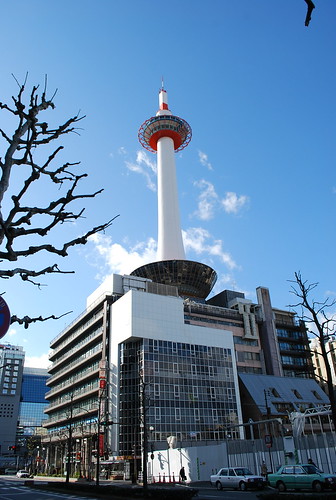
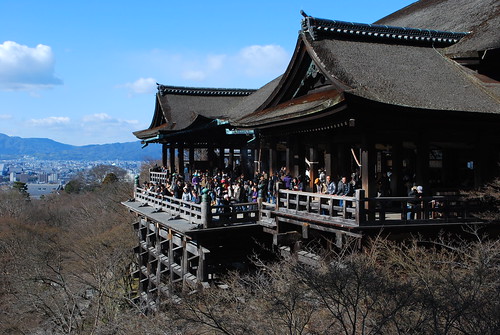
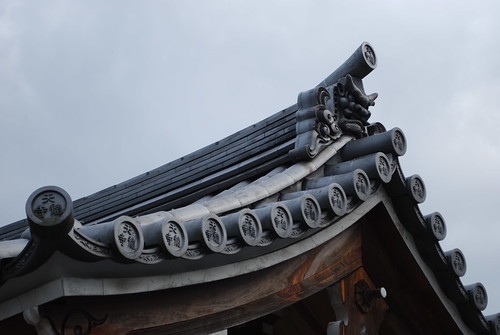
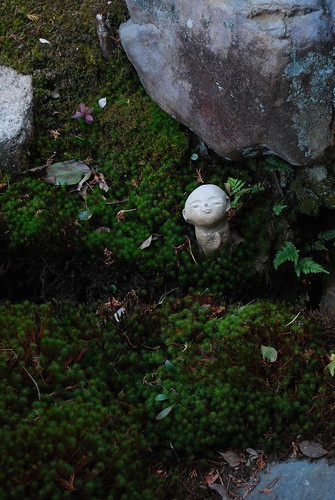

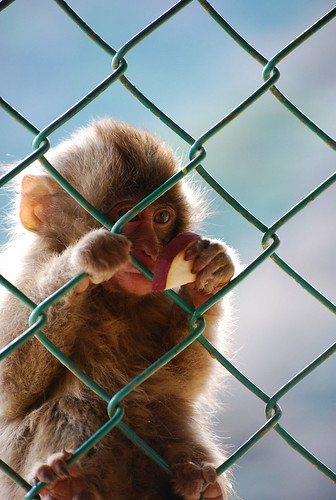
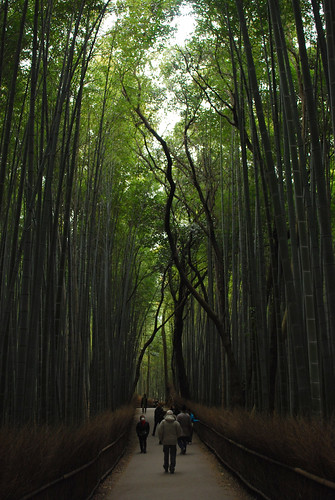

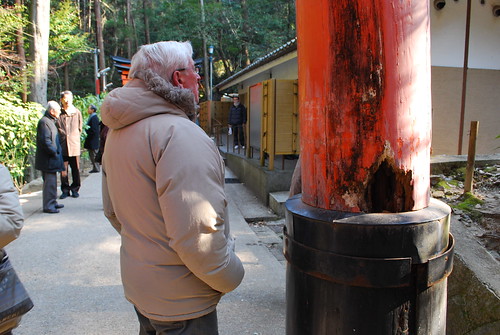
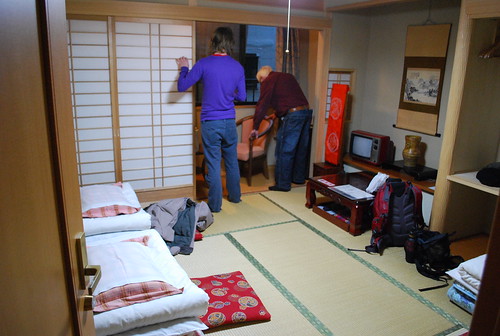


Great post Nick, one of the best if not the best yet...nice ending...smooth mr jones, smooth writing...
ReplyDeletealso craig has a blog? Ou?
Sorry for the confusion. Craig helped to dictate emails, but it was I who was doing the blog posting. He hasn't got a blog...least not that I know of...
ReplyDelete